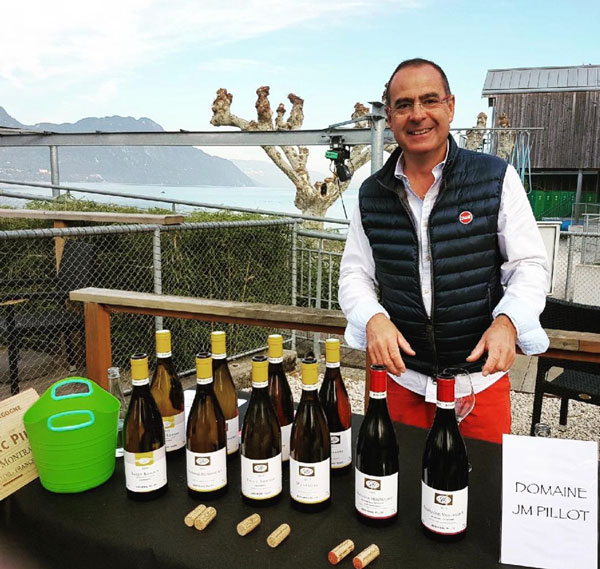Domaine Jean-Marc Pillot
VISIT IMPORTER'S WEBSITE
Country of Origin: France
Location: Chassagne-Montrachet, Côte de Beaune
People: Jean-Marc Pillot, Owner & Winemaker
Items
Jean-Marc Pillot is the fourth generation of the Pillot family to tend vineyards in Chassagne-Montrachet. He joined his father, Jean, in 1985 to learn the craft of vigneron. After six years of working side-by-side, Jean-Marc assumed the direction of the domaine in 1991 with the assistance of his wife, Nadine, and his sister, Beatrice. Of course, his father, Jean, remains by his side rendering advice and valuable assistance in the vineyards (often while he is tending the garden in back).
Jean-Marc has instituted several changes at the estate, the most prominent of which is the construction of a new cave. Of equal importance, Jean-Marc expanded the amount of vineyards under cultivation and has made subtle modifications in vinification and elevage to place his own mark on this estate, which now covers approximately fifteen hectares with an annual production of, more or less, 60,000 bottles.
The domaine is dominated by its production of white wines but there are important cuvées of red wine produced here as well. Vineyard holdings are spread throughout the village of Chassagne with subsidiary parcels in Puligny, Santenay, Meursault and Remigny (to the south). This breadth of real estate enables the Pillot family to produce a stunning range of wines that put on brilliant display the intricacies of terroir in this southern tier of the Côte de Beaune. The estate's jewels are its premier crus blancs (Baudines, Chenevottes, Macherelles, Vergers, Morgeot, Caillerets, La Maltroie and Champs Gain) and premier cru rouges (Macherelles, Morgeot, Clos St.Jean), all within the boundaries of Chassagne-Montrachet. The vines in most parcels are between 25 and 50 years old; in certain instances the vines are considerably older, reaching the 100 year mark in Clos Saint Jean and Clos Saint Marc (within the cru of Les Vergers).
The white wines are almost all fermented and aged in barrel with a regimen of 10% to 30% new oak (the degree depending on the structure and importance of the wine). The wines are aged on the fine lees for twelve months and then are racked out of barrel into stainless steel tanks to clarify and settle naturally for an additional six months. The extra aging avoids the necessity to cold stabilize the wine. The red wines are destemmed entirely; the grapes undergo a brief cold maceration (up to five days) and then the alcoholic fermentation covers 10 to 12 days with both remontage and pigeage being practiced daily during that period. The reds are racked into barrel where the malolactic fermentation occurs. The wines are left in contact with the fine lees for twelve months. Then, the wines are racked from barrel into stainless steel for an additional six months of aging before being bottled without filtration.


